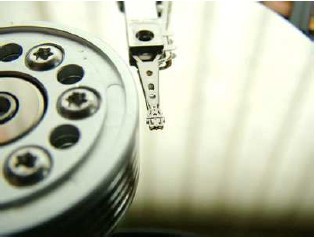What data recovery tools to buy if you want to start a data recovery business?
Free video data recovery training on how to recover lost data from different hard drives?
Where to buy head and platter replacement tools at good prices?
Data recover case studies step by step guide
I want to attend professional data recovery training courses
Head crash is one very typical physical data recovery case and it’s very necessary for us to learn more about the HDD head and head crash data recovery cases.
When the heads have become physically damaged, or have become dirty, or the preamplifier has failed, we get head crash problems. Unless the heads have started to come apart and contacted the platter surface, the problem is not as bad as it may sound. That’s not to say the recovery from these failures is easy, but the noise you hear tends to exaggerate the actual symptoms. When customers hear their drive clicking, they often times will visualize the head scraping, or crashing into objects within the drive. There are times when that is the case, however, most of the noise that is heard, is due to the head assembly hitting a limiter as it sweeps back and forth across the platters looking for the information it needs to calibrate. This limiter keeps the heads from sweeping too far across the platter.
The important thing to remember is if your drive is clicking or making any unusual noises at all, you should not power up the drive at all. Continuing the operate the drive can cause further data loss.
The read/write heads read and write data to the platters. There is typically one head per platter side, and each head is attached to a single actuator shaft so that all the heads move in unison. When one head is over a track, all the other heads are at the same location over their respective surfaces. Typically, only one of the heads is active at a
time, i.e., reading or writing data. When not in use, the heads rest on the stationary platters, but when in motion the spinning of the platters create air pressure that lifts the heads off the platters. The space between the platter and the head is so minute that even one dust particle or a fingerprint could disable the spin. This necessitates that hard drive assembly be done in a clean room. When the platters cease spinning the heads come to rest, or park, at a
predetermined position on the heads, called the landing zone.
The read write heads HD heads are kept from contacting the platter surface by the air that is extremely close to the platter; that air moves at, or close to, the platter speed. The record and playback head are mounted on a block called a slider, and the surface next to the platter is shaped to keep it just barely out of contact. The write head
magnetizes a region by generating a strong local magnetic field, the read and write elements are separate, but in close proximity, on the head portion of an actuator arm. The read element is typically magneto-resistive while the write element is typically thin-film inductive. Due to the extremely close spacing between the heads and the disk surface, any contamination of the read-write heads or platters can lead to a head crash — a failure of the disk in which the head scrapes across the platter surface, often grinding away the thin magnetic film and causing data
loss. Head crashes can be caused by electronic failure, a sudden power failure, physical shock, wear and tear, corrosion, or poorly manufactured platters and heads.
 Here is a close-up of the read/write heads on the disk platters. These ride on a thin layer of air generated by the rotating platters. The platters are made from a non-magnetic material, usually aluminium alloy or glass, and are coated with a thin layer of magnetic material. The read-and-write head is used to detect and modify the magnetization of the material immediately under it. There is one head for each magnetic platter surface on the spindle, mounted on a common arm.
Here is a close-up of the read/write heads on the disk platters. These ride on a thin layer of air generated by the rotating platters. The platters are made from a non-magnetic material, usually aluminium alloy or glass, and are coated with a thin layer of magnetic material. The read-and-write head is used to detect and modify the magnetization of the material immediately under it. There is one head for each magnetic platter surface on the spindle, mounted on a common arm.
To fix head crashes and recover the lost data, you need to find a donor hard drive with donor heads and replace the damaged heads with the donor heads. Please remember head replacement must be operated within clean room environment and some professional head replacement tools need to be used.







Comments are closed
Sorry, but you cannot leave a comment for this post.